Minimally Invasive Heart Surgery
Minimally invasive heart surgery is getting popular in the last few years. A minimally invasive approach allows one or more combinations of the following:
- Access to the heart through small incisions splitting only small part of the breast bone or through the spaces in the rib cage without splitting breast bone (Minimal Access Surgery)
- Surgery on heart without stopping the heart,(beating heart surgery)
- Making use of technology like videothoracoscope or robots to do key hole surgery.
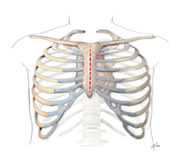
Figure-1
Moreover artificial heart-lung machine is used routinely in all patients going for coronary artery bypass surgery (CABG- surgery done to increase blood supply to heart when it’s blood vessels are blocked). This machine can cause damage to blood resulting in bleeding problems, brain strokes, more blood transfusions and infections.
Minimally invasive heart surgery overcomes some of these by the following techniques:
Beating Heart Bypass Surgery (figure-2)
Coronary arteries are 1.5 to 2.5mm in diameter. When heart is beating, it is difficult to do surgery on such small blood vessels. Traditionally, bypass surgery is done after heart is stopped. During this time, blood is circulated using an artificial heart-lung machine. Now with the advent of newer devices, it is possible to do coronary artery bypass surgery without stopping heart. What method is suitable will be decided by surgeon in the operating room. This results in less bleeding problems, less blood transfusions and likely to have less complications like kidney failure and strokes.
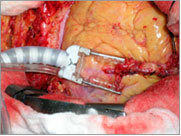
Figure-2
Small Incisions:
Operations through small incisions (2-3”) reduce length of hospital stay to 2-3 days and they can resume their normal activites in 2-3 weeks. These result in less pain, less bleeding, lower infection rates and they are cosmetically attractive. Some of them are:
During Coronary artery bypass surgeries a vein is taken from one of the legs to use during surgery. Traditionally, vein harvesting is accomplished through a lengthy surgical incision in the leg (see figure 3). But in recent times leading Surgeons have been practicing a minimally invasive procedure called Endoscopic Vein Harvesting (see figure 4). With this leg complications are minimized- especially useful in obese patients, diabetics and women.
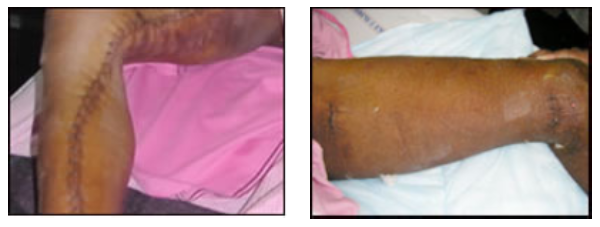
Figure-4,5
Today some of the patients undergoing bypass surgery can be offered this surgery through small incisions. Instead of traditional breast bone splitting surgery, if patient requires even three to four bypass grafts, this can be done through a small incision in rib cage (figure 5 & 6).
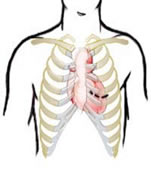
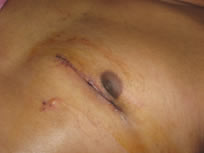
Minimal Access Valve (and some congenital) Surgeries:There are 4 valves in heart which ensure smooth blood flow from one chamber to another chamber and that too only in forward direction. Sometimes they get diseased – resulting in either the narrowing of the valve causing obstruction to forward flow or the leakage of valve leading to the blood flowing in the reverse direction also. Commonly, valves on the left side (the mitral valve between the left upper and lower chambers, and the aortic valve between the left lower chamber and the aorta) are affected. Traditionally they are repaired or replaced via the midline breast bone splitting incision. Nowadays many of these can be operated using small incisions on the side of chest(figure 7)- for minimal access mitral valve replacement or repair, Minimal access closure of Atrial septal defect), sometimes by a little higher incision for Minimal access aortic valve replacement or splitting only part of the breast bone (figure 8) for replacement of both mitral and aortic valve replacements
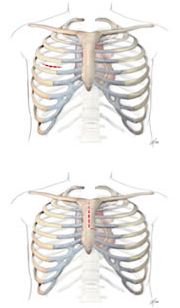
Figure-7,8
Robotic and Videothoracoscopy Assisted Heart Surgeries:In a few selected centers around world, some of the surgeries on heart can be done through key holes using technology like video-thoracoscopy and robotics. Mitral valve surgery can be done using a 4 cm incision on the side of chest with their help. In a select few centers around world, coronary artery bypass surgeries are being attempted totally thorough key holes.
In the coming decade, cardiothoracic surgery is likely to undergo major shift towards minimally invasive surgery where patients can be discharged in 2-3 day’s time and can go back to work in 2 weeks’ time.
Dr Gokhale CT Associates has one of the largest experiences in India in Minimal Access Coronary Bypass (MICAB) and Minimal access mitral valve replacements and closure of atrial septal defects. They have done over 800 such procedures so far. Dr Gokhale is invited by many surgeons nationally and Internationally to train them in minimal access heart surgery.
 Ask Doctor
Ask Doctor